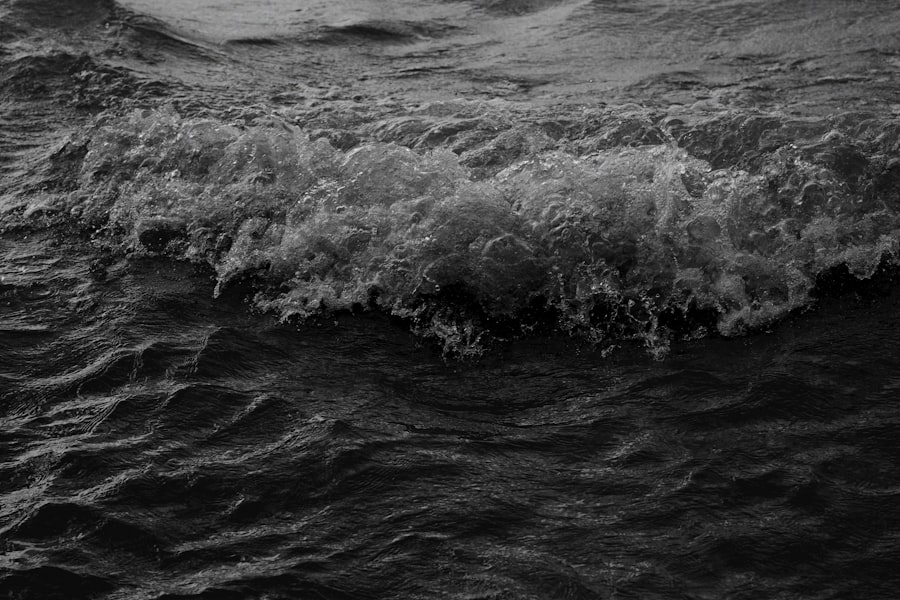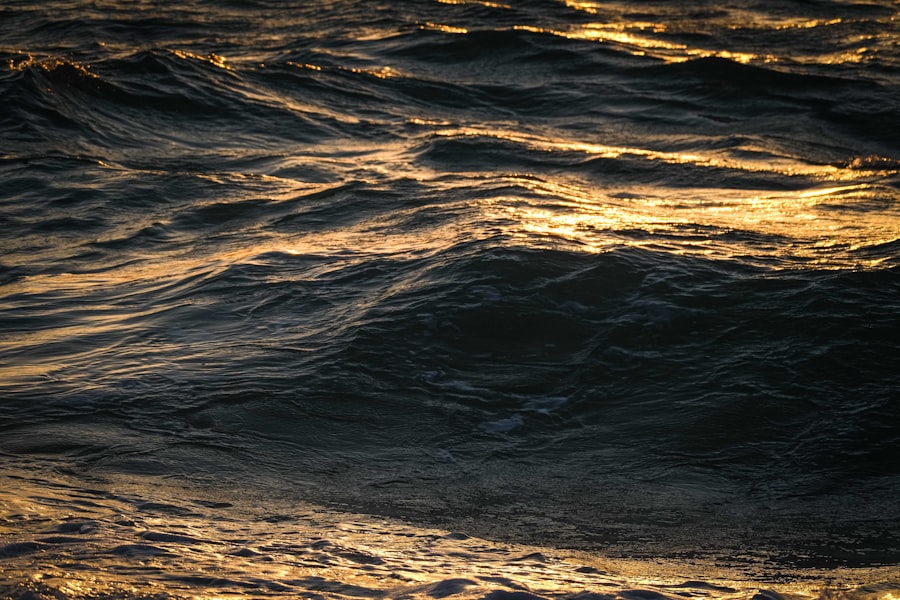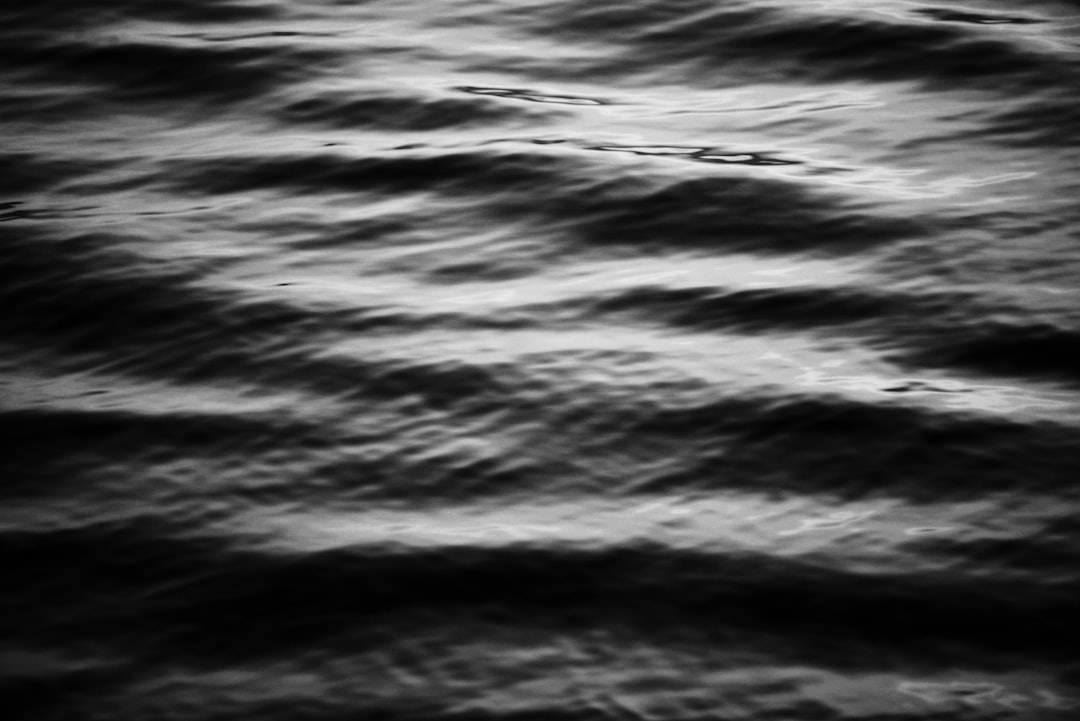The Drake Passage, a body of water situated between the southern tip of South America and Antarctica, is renowned for its tumultuous seas and unpredictable weather patterns. This narrow stretch of ocean, measuring approximately 800 kilometers (500 miles) in width, serves as a critical maritime route for vessels traveling to and from the Antarctic region. Named after the English explorer Sir Francis Drake, who navigated these waters in the late 16th century, the passage has since become infamous among sailors and researchers alike for its challenging conditions.
The convergence of the Atlantic and Pacific Oceans creates a unique environment where wave size can reach staggering heights, making it a focal point for maritime studies and navigation.
The passage plays a significant role in global ocean circulation and weather patterns, influencing marine ecosystems and the climate of surrounding regions.
As such, comprehending the factors that contribute to wave size in this area is crucial for ensuring safe navigation and fostering a deeper appreciation of the ocean’s complexities.
Key Takeaways
- Drake Passage is a treacherous stretch of water between South America’s Cape Horn and the South Shetland Islands of Antarctica.
- Understanding wave size is crucial for safe navigation through Drake Passage, as large waves can pose significant risks to ships and crew.
- Factors affecting wave size in Drake Passage include wind speed and direction, the influence of tides and currents, and the interaction between swell and sea waves.
- Wind plays a key role in wave formation, with stronger winds leading to larger and more powerful waves in Drake Passage.
- Tides and currents also have a significant impact on wave size, with the interaction between these factors contributing to the challenging conditions in the passage.
The Importance of Understanding Wave Size
Wave size in the Drake Passage is not merely a matter of curiosity; it has profound implications for navigation, safety, and environmental understanding. For mariners, large waves can pose significant risks, leading to capsizing or damage to vessels. Understanding wave size allows sailors to make informed decisions about when to embark on their journeys and how to adjust their routes in response to changing conditions.
Moreover, knowledge of wave dynamics can enhance the safety protocols employed by shipping companies and research expeditions, ultimately saving lives and resources. Beyond navigation, wave size also serves as an indicator of broader oceanic processes. Scientists study wave patterns to gain insights into climate change, as variations in wave height can reflect shifts in wind patterns, ocean temperatures, and atmospheric conditions.
By monitoring these changes, researchers can better understand the health of marine ecosystems and predict future environmental shifts. Thus, grasping the intricacies of wave size in the Drake Passage is vital for both practical navigation and scientific inquiry.
Factors Affecting Wave Size in Drake Passage

Several factors contribute to the wave size experienced in the Drake Passage, each interplaying with one another to create a dynamic maritime environment. One of the primary influences is the wind speed and direction. Strong winds can generate larger waves by transferring energy to the water’s surface.
In the Drake Passage, where winds can reach gale force, the resulting waves can grow rapidly, creating hazardous conditions for vessels. The fetch, or distance over which the wind blows across open water, also plays a crucial role; a longer fetch allows waves to build more significantly before encountering land or other obstacles. Another critical factor is the ocean’s depth and topography.
The Drake Passage features varying depths that can influence wave behavior. In shallower areas, waves may break more quickly, while deeper regions allow for larger swells to develop. Additionally, underwater features such as ridges or valleys can affect how waves propagate through the water column.
Understanding these factors is essential for predicting wave size and ensuring safe navigation through this challenging passage.
The Role of Wind in Wave Formation
| Wind Speed | Wave Height | Wave Period |
|---|---|---|
| 0-10 knots | 0-1 ft | 4-8 seconds |
| 11-16 knots | 1-3 ft | 5-9 seconds |
| 17-21 knots | 3-6 ft | 6-10 seconds |
| 22-27 knots | 6-10 ft | 7-12 seconds |
Wind is perhaps the most significant factor in wave formation within the Drake Passage. As winds blow across the surface of the water, they create friction that transfers energy to the waves. The strength of the wind directly correlates with wave height; stronger winds produce larger waves.
In this region, where winds can reach speeds exceeding 60 knots during storms, it is not uncommon for waves to reach heights of 10 meters (33 feet) or more. The direction of the wind also plays a crucial role in shaping wave patterns. When winds blow consistently from one direction, they can create long-period swells that travel vast distances across the ocean.
Conversely, shifting winds can lead to chaotic sea states with short-period waves that are more difficult to navigate. Mariners must remain vigilant and attuned to wind forecasts to anticipate changes in wave conditions effectively.
The Influence of Tides and Currents on Wave Size
While wind is a primary driver of wave formation, tides and currents also significantly influence wave size in the Drake Passage. Tidal forces create fluctuations in water levels that can amplify or diminish wave heights depending on their timing and intensity. For instance, during high tide, waves may appear larger as they encounter shallower areas or coastal features that cause them to break more dramatically.
Currents within the passage can further complicate wave dynamics. The confluence of different ocean currents—such as the Antarctic Circumpolar Current—can create areas of turbulence where waves interact unpredictably. These interactions can lead to steep waves or sudden changes in wave direction, posing additional challenges for navigation.
Understanding how tides and currents affect wave size is essential for mariners seeking to traverse this treacherous passage safely.
Understanding Swell and Sea Waves

In navigating the Drake Passage, it is crucial to differentiate between swell and sea waves, as each type presents unique challenges for mariners. Sea waves are typically generated by local winds and are characterized by their short wavelengths and steep profiles. These waves can be particularly hazardous due to their unpredictable nature and tendency to break suddenly.
In contrast, swell waves are formed by distant weather systems and are characterized by longer wavelengths and smoother profiles. Swell waves can travel thousands of kilometers across open water before reaching the Drake Passage, often arriving with a more organized pattern. While swell waves may be less chaotic than sea waves, they can still pose significant risks when combined with local wind conditions or currents.
Understanding these distinctions allows sailors to better prepare for the specific challenges they may encounter while navigating this formidable passage.
The Impact of Wave Size on Navigating Drake Passage
The impact of wave size on navigation through the Drake Passage cannot be overstated. Large waves can create dangerous conditions that challenge even experienced mariners. Vessels may struggle to maintain stability in high seas, leading to potential capsizing or structural damage.
Furthermore, large waves can hinder visibility and make it difficult for crews to assess their surroundings effectively. Navigators must be adept at interpreting weather forecasts and understanding real-time conditions to make informed decisions about their routes. In some cases, it may be necessary to delay departure or alter course entirely to avoid particularly treacherous areas known for large wave activity.
By recognizing the potential impact of wave size on navigation, mariners can enhance their safety and ensure successful voyages through this challenging maritime corridor.
Techniques for Navigating Large Waves
Navigating large waves in the Drake Passage requires skillful seamanship and an understanding of various techniques designed to mitigate risks. One common approach is to adjust vessel speed; slowing down can help reduce the impact of waves on a ship’s hull and maintain better control during turbulent conditions. Additionally, altering course to approach waves at an angle rather than head-on can help minimize slamming impacts and improve stability.
Another effective technique involves utilizing ballast systems to enhance a vessel’s stability in rough seas. By adjusting weight distribution within the ship, crews can lower their center of gravity and improve overall balance during challenging conditions. Furthermore, maintaining clear communication among crew members is essential; ensuring that everyone is aware of their roles during rough weather can significantly enhance safety and efficiency.
Safety Precautions for Dealing with Large Waves
Safety precautions are paramount when dealing with large waves in the Drake Passage. Mariners should always wear appropriate safety gear, including life jackets and harnesses when on deck during rough weather conditions. Additionally, securing loose items on board is crucial; unrestrained equipment can become dangerous projectiles during turbulent seas.
Regular training drills focused on emergency procedures are also vital for crew preparedness. Familiarizing all crew members with evacuation routes and safety protocols ensures that everyone knows how to respond effectively in case of an emergency. By prioritizing safety measures and fostering a culture of preparedness, mariners can navigate large waves with greater confidence.
Technology and Tools for Monitoring Wave Size
Advancements in technology have significantly improved mariners’ ability to monitor wave size in real-time within the Drake Passage. Satellite imagery provides valuable data on sea surface conditions, allowing navigators to assess wave heights and patterns from afar. Additionally, buoys equipped with sensors collect data on wave activity, providing critical information about current conditions.
Weather forecasting models have also become increasingly sophisticated, offering detailed predictions about wind patterns and potential wave sizes days in advance. By leveraging these technological tools, mariners can make informed decisions about their routes and prepare adequately for changing conditions.
Navigating Drake Passage with Confidence
Navigating the Drake Passage presents unique challenges due to its notorious wave sizes and unpredictable weather patterns. However, by understanding the factors influencing wave formation—such as wind speed, tides, currents, swell versus sea waves—mariners can enhance their ability to traverse this formidable body of water safely. Employing effective techniques for navigating large waves while prioritizing safety precautions ensures that crews are well-prepared for any situation they may encounter.
As technology continues to advance, mariners have access to an array of tools that facilitate real-time monitoring of wave conditions, allowing them to navigate with greater confidence than ever before.
The Drake Passage, known for its turbulent waters, is a fascinating subject for oceanographers and adventurers alike. The waves in this region can reach impressive heights, often challenging even the most seasoned sailors. For those interested in exploring more about the dynamics of ocean waves and their impact on maritime navigation, a related article can be found on MyGeoQuest. This article delves into the science behind wave formation and the unique conditions of the Drake Passage. To learn more, you can visit the article by clicking on this link.
WATCH NOW! Drake Passage: Earth’s Deadliest Waters Revealed
FAQs
What is Drake Passage?
Drake Passage is the body of water between the southern tip of South America at Cape Horn and the South Shetland Islands of Antarctica. It is known for its rough seas and challenging sailing conditions.
How big are the waves in Drake Passage?
The waves in Drake Passage can reach heights of 30 feet (9 meters) or more. The area is notorious for its strong winds and large swells, making it one of the roughest stretches of water in the world.
What causes the large waves in Drake Passage?
The large waves in Drake Passage are primarily caused by the strong westerly winds that sweep across the Southern Ocean. These winds can generate powerful waves that can be hazardous for ships and other vessels navigating the area.
Are there specific times of the year when the waves are larger in Drake Passage?
The waves in Drake Passage can be large and unpredictable throughout the year due to the strong winds and currents in the area. However, the winter months (June-August) tend to experience the strongest winds and largest waves, making it an especially challenging time for maritime travel in the region.
